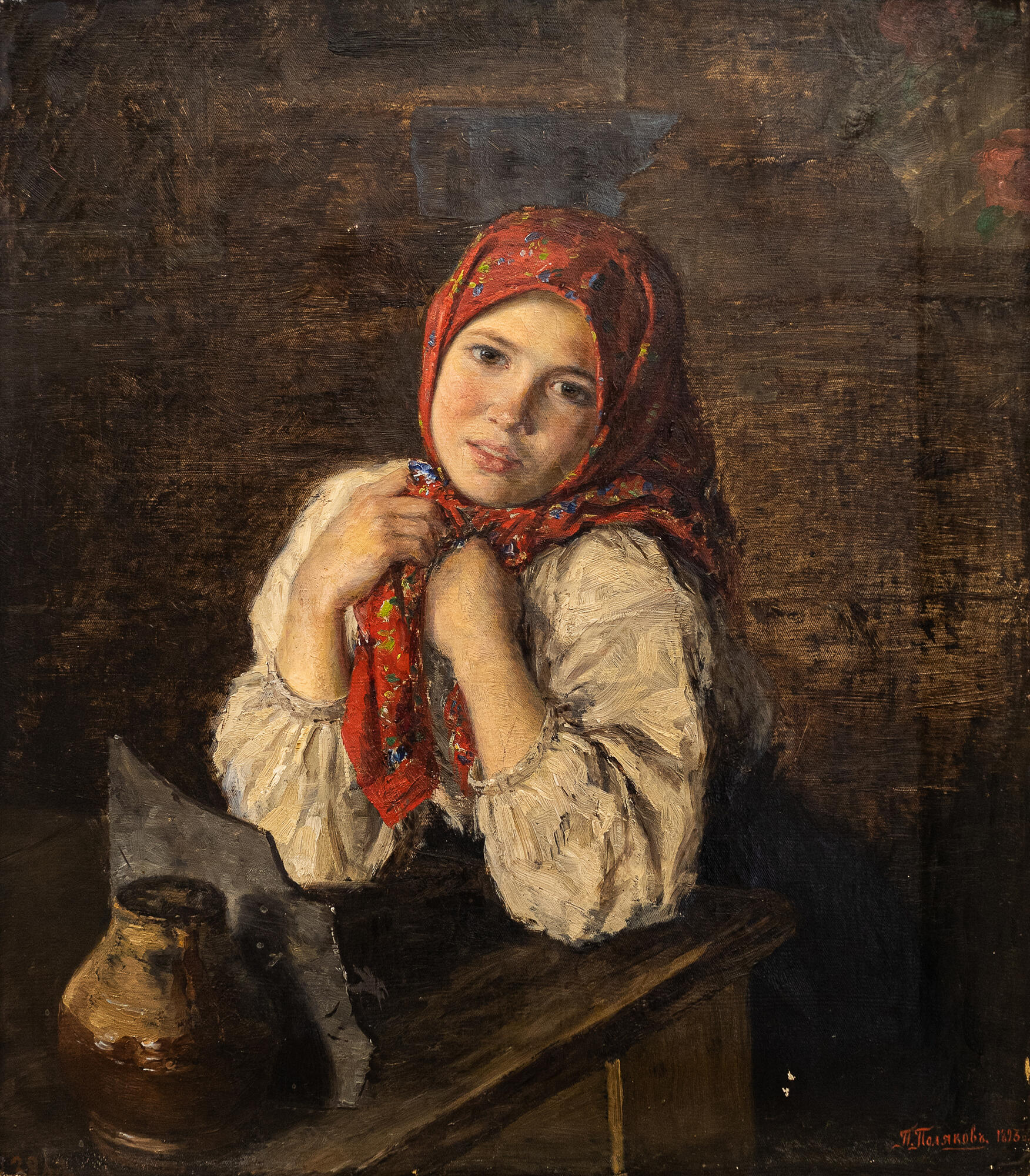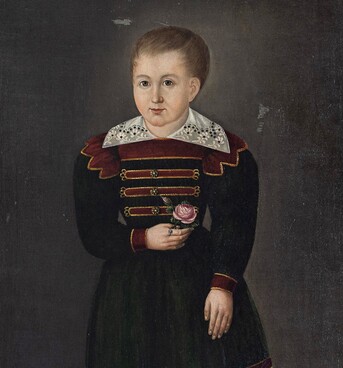In the 19th century, the peasant theme was quite popular among the Russian intelligentsia. At that time, the main part of the population of the Russian Empire was peasants, but they did not have any civil or property rights until 1861.
Through the image of the peasantry, many poets and writers tried to express the national character of the Russians, and realist painters depicted the true life of peasants.
In 1861, after a long preparation, Emperor Alexander II abolished serfdom: he gave peasants legal rights, but lands could be owned only by landlords. The issue of social injustice has become thornier.
At the same time, social requirements for artists were changing. Along with aesthetics, artists were expected to express a deep moral content and statements about acute social issues.
Petr Polyakov painted ‘Country Girl’ in 1893. In 1927, it was transferred from the Radishchev Museum to the picture gallery of the Volsk Museum of Local History.
There is a teenage girl dressed in a white homespun shirt and a red headscarf with its ends in the girl’s hands. A number of objects indicate that the girl was from a poor family: an irregular fragment of a mirror standing on a roughly made wooden table, a washed-out shirt, and dark walls in the house.
There is very little information about Pyotr Polyakov. He is mentioned in the book “Notes of a Sailor-Artist” by the famous marine artist Alexey Bogolyubov.
Through the image of the peasantry, many poets and writers tried to express the national character of the Russians, and realist painters depicted the true life of peasants.
In 1861, after a long preparation, Emperor Alexander II abolished serfdom: he gave peasants legal rights, but lands could be owned only by landlords. The issue of social injustice has become thornier.
At the same time, social requirements for artists were changing. Along with aesthetics, artists were expected to express a deep moral content and statements about acute social issues.
Petr Polyakov painted ‘Country Girl’ in 1893. In 1927, it was transferred from the Radishchev Museum to the picture gallery of the Volsk Museum of Local History.
There is a teenage girl dressed in a white homespun shirt and a red headscarf with its ends in the girl’s hands. A number of objects indicate that the girl was from a poor family: an irregular fragment of a mirror standing on a roughly made wooden table, a washed-out shirt, and dark walls in the house.
There is very little information about Pyotr Polyakov. He is mentioned in the book “Notes of a Sailor-Artist” by the famous marine artist Alexey Bogolyubov.



